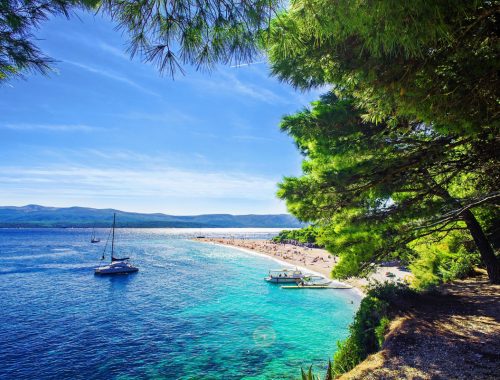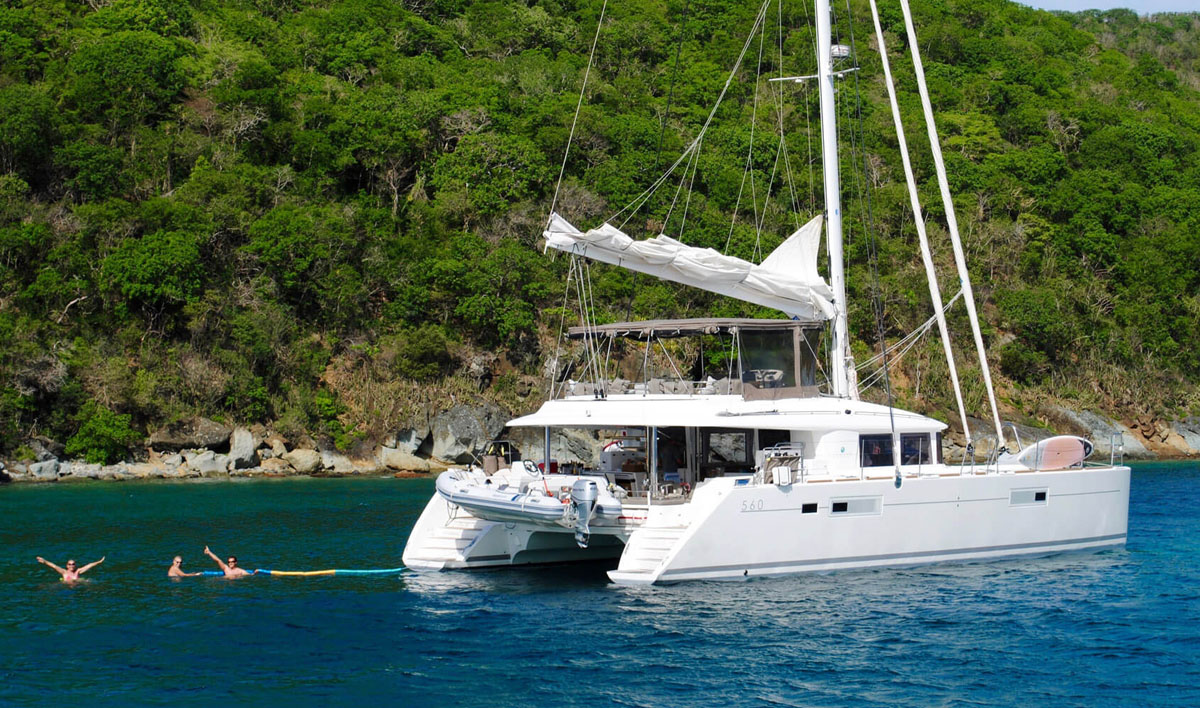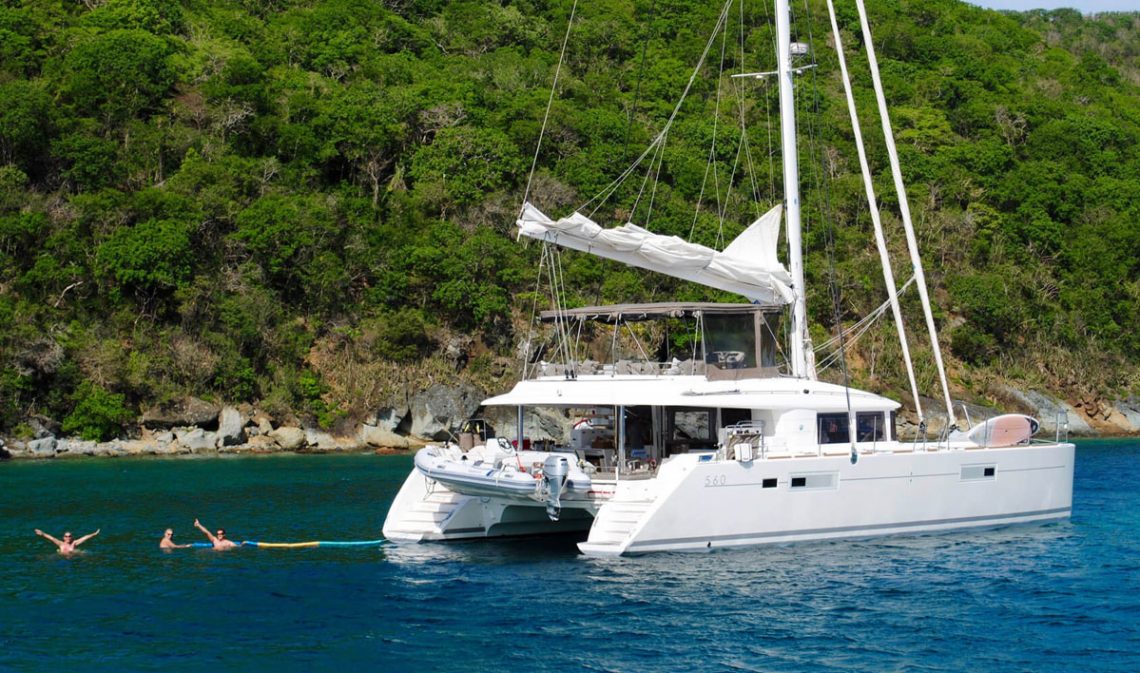
Explore Western Kvarner: sail on the azure seas and uncover ancient treasures
Sailing in Croatia’s most authentic region. Ideal for unwinding and getting to know the Adriatic’s ancient soul. Sail between small islands, secluded bays, and fishing villages in peace.
The most beautiful part of the Croatian sea can be found right here in Kvarner, just before Lošinj. Here, you will be greeted by flocks of dolphins, the largest colony in the Adriatic, which swims freely between the islands only 100 miles from Trieste. It is a significant part of Croatia, which has been the cradle of seafaring for centuries: many ships have come from here, and it is also home to many brave captains and sailors, like few others in the world. Fishing villages, white-pebbled bays, and the occasional “konoba,” or simple and authentic inns where you can eat practically on the water, await you.
Enjoy the view, where streets are filled with churches, monastery ruins, and lighthouses from the Austro-Hungarian era, all built of white Istrian stone, and vineyards descend in terraces towards the sea, sheltered by walls, where the Mediterranean Maquis caresses the bay all the way to the sea. Here is a proposal for a sailing cruise in Kvarner, where the maestral (called “maistro” in Croatia) will faithfully accompany you on this magical journey.
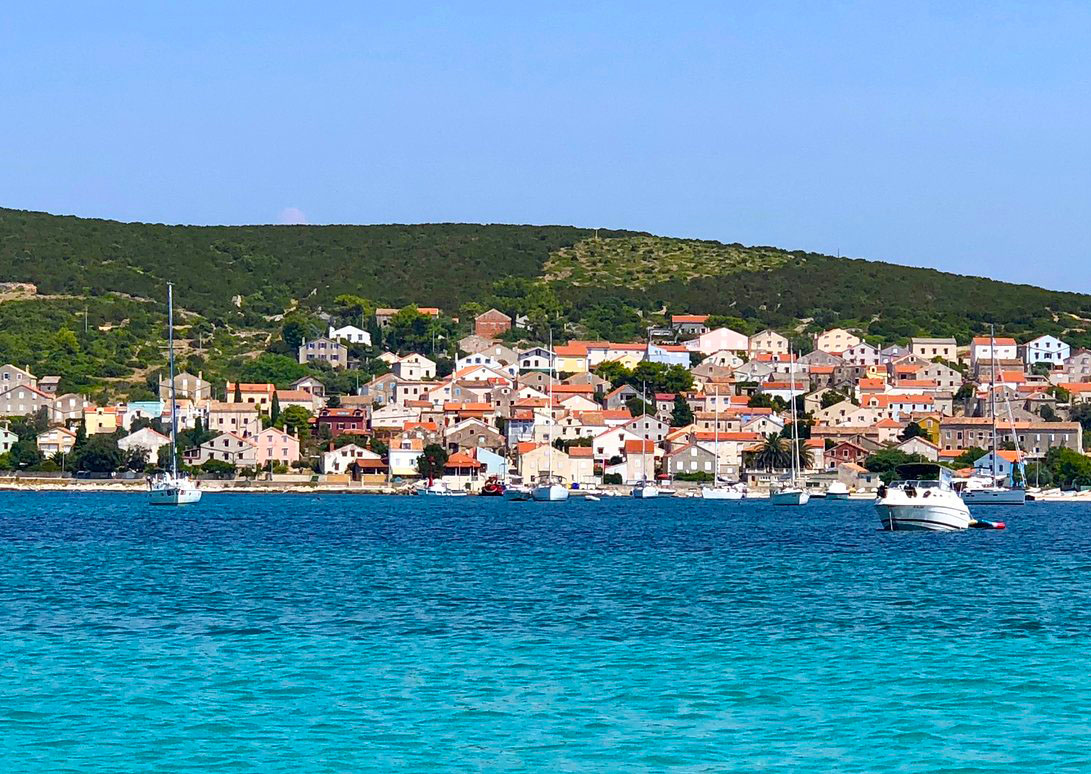
Day 1, ACI marina Pomer – Unije island, 20 miles
The journey will begin in Medulin at Aci Marina Pomer marina, hidden in the shelter of the wide Medulin Bay, which is closed to the west by Cape Premontura, the extreme tip of Istria, and to the east by Cape Marlera. After about 20 miles, the island of Unije appears on the bow, announced to the crew by a 19th-century lighthouse. It is surrounded by endless olive groves and the one and only village distinguished by pastel houses with flowering pergolas beneath the Kalk hill.
Unije is now a popular island for both vacationers and sailors visiting the island. It is extremely popular among sailors sailing from Lošinj to Istria or vice versa. Because the island is small, with only 16 km2 of surface area and only one town, Unije, it is less populated and thus does not attract mass tourism. The island has an official population of about 100 people. Their numbers are significantly lower outside of the summer season. They all live in Unije, on the western side of the island, which is also the only port on the island.
You can anchor in Maracol Bay on the island’s east coast, which is equipped with buoys and is storm-protected, but is inaccessible if the southerly wind blows. You can meet local fishermen here in the morning as they return from night fishing with nets full of fish, because the sea, they say, is so rich with fish that the fish just jump into the nets.
The local dialect reflects various exchanges on the island, from Venetians to Turks, and from Italy to Croatia. Aside from diving and sunbathing in the crystal clear waters, you can enjoy excursions on land among the secluded paths that climb between oaks and Mediterranean scrub towards the top of the hill where there is a small chapel: the ideal place to enjoy the sun and the view of the strait between Cres and Istria.
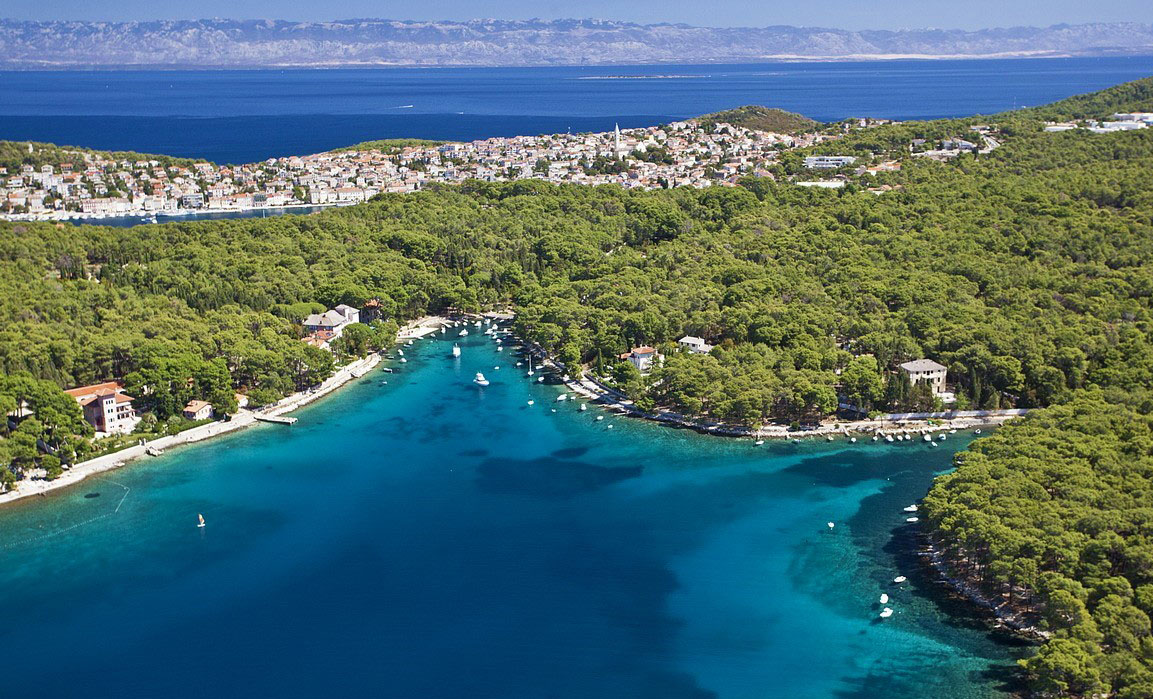
Day 2, Unije island – Mali Losinj, 7 miles
A 7-mile journey along the islets of Vela Srakane, Mala Srakane, and Susak, the island with golden sand. This is how you get to Mali Lošinj, the most appealing place to moor on Lošinj, which took first place on the Guardian’s list of the best vacation spots in 2019 thanks to its climate, cuisine, and pleasant wellness facilities, a tradition dating back to the time of the Habsburg spas. Maritime tradition is important here, but so is shipbuilding, as this town boasted as many as 150 sailing ships and four shipyards in the mid-nineteenth century. Admiral Agostino Straulin (1914-2004), the greatest Italian sailor of all time, was born here, and his history is intertwined with local maritime history.
The lighthouse on Cape Kurila marks the entrance to the most famous natural harbour in the upper Adriatic, which is surrounded by a unique parade of nineteenth-century houses, cafes, and restaurants. The view of the sea coast is enhanced by a landscape dotted with agaves and bougainvillaea, palm trees, oranges, and lemons.
There are numerous attractions that draw visitors from all over the world, but the Apoksiomena museum, which is dedicated to the Greek bronze statue of the athlete, should not be overlooked. In 1997, a tourist from Belgium discovered the statue on the seafloor near the island of Lošinj at a depth of 45 metres. Apoxyomenes was exhumed from the ocean’s bottom in 1999 after spending nearly two millennia there.
Another attraction on the island worth seeing is the fragrant island garden. In Mali Lošinj, there is essentially a nursery for island medicinal plants. We can learn about the island’s rich flora and the healing properties of plants with the help of an expert guide. In the garden, more than 350 species of wild herbs grow, enriching the Lošinj-Cres archipelago. More than 100 allochthonous plant species complete the fragrance picture of the garden. The garden offers a breathtaking view of Lošinj’s most beautiful coves, all the way to the Velebit mountain. Visitors can try local food products in the evenings, between 6:00 p.m. and 11:00 p.m., and buy original island souvenirs such as sea salt with spices, myrtle liqueur, fragrant herbal liqueur “Moj otok,” scented sachets, lemon liqueur, Lošinj tea, and other special items in the shop.
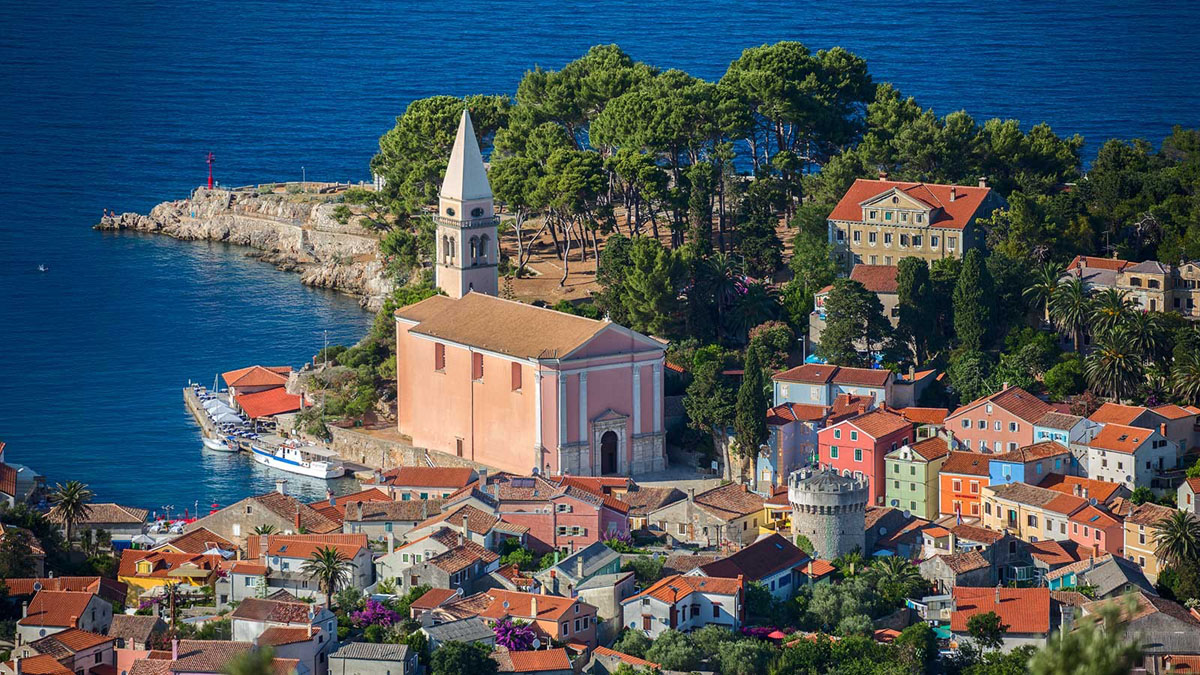
Day 3, Mali Losinj – Veli Losinj, 3 miles
The third day of this wonderful sailing in Kvarner will take you to Veli Lošinj, which, despite its name, is smaller than Mali Lošinj and consists of only a few fishing huts and St. Anton Puščavnik’s parish church. The gardens and indoor parks in the luxurious villas of former captains, ship owners, and wealthy gentlemen are the most distinctive features of Veli Lošinj. More than 80 different varieties of aromatic herbs grow in these gardens, which can be accessed through “portunes,” or typical forged doors. These herbs were brought to Veli Lošinj by sailors after they returned from their voyages. Veli Lošinj also received the Blue Flower award for the most orderly city in the Adriatic region in 2008. The small fishing port of Rovenska, located near Veli Lošinj, attracts attention with its beautiful beach, fishing atmosphere, and the tradition of people who have dedicated their lives to the sea and direct contact with nature.
You can anchor in front of the islet of Oruda, which is located in front of Veli Lošinj, if you want to enjoy the peace. This area is home to a large dolphin colony, which can be easily spotted during stops or while crossing this stretch of sea.
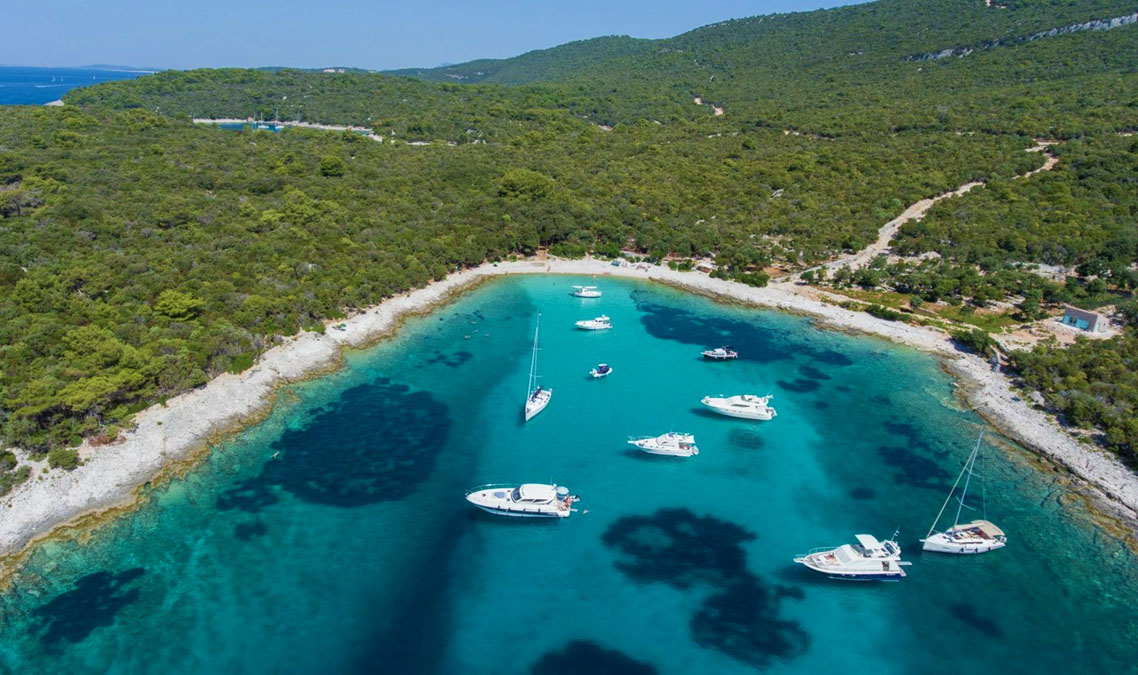
Day 4, Veli Losinj – Ilovik, 8 miles
Set the anchor and head south. After a short journey, you will reach the island of Ilovik, which was originally known as Tovornjak (hence the Italian name Asinello), but was later renamed Ilovik after its soil. The coast is accessible from all directions and is indented with numerous bays. Only vessels with a draught of less than 2 metres can land in the single port. Alternatively, you can anchor just outside the harbour and disembark using a dinghy. The entire seabed around the island is sandy and covered in Posidonia, with a depth of about 10 metres. Parzine, on the island’s southeast coast, has the largest bay with a sandy beach.
The sea around the island is also abundant in fish, particularly high-quality blue and white fish. On the mainland, there are numerous fish restaurants serving sea bream, squid, sea bass, and occasionally lobster.
Ilovik is known as the “Flower Island” because oleanders, palm trees, roses, and other flowers bloom around almost every house, and the tall eucalyptus trees are unique to the island. Because of its excellent maritime traffic, the Ilovik Channel has always been used for anchoring, and thus traces of various historical periods can be found on the islands. The oldest settlement traces come from the Liburni Illyrian tribes. The islands are teeming with Roman artefacts. There are wall remnants, numismatic cases, a sarcophagus, and an underwater archaeological site nearby. The cemetery’s current walls date from the 11th century. On this site, a Benedictine monastery was built, and there was most likely a Byzantine fortress before that.
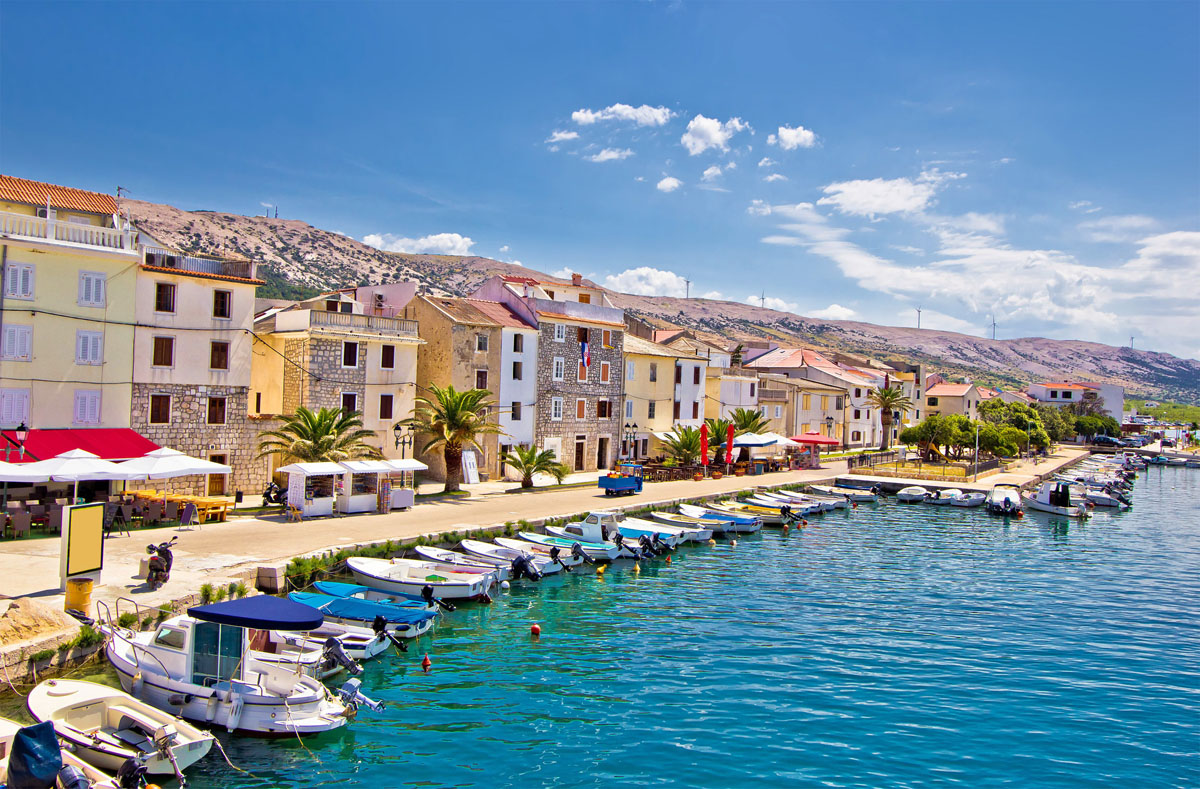
Day 5, Ilovik – Premuda – Pag, 25 miles
The next destination (the island of Premuda) is only an hour’s sail away with a favourable wind. It is an island in the Zadar archipelago with the same name and a settlement. It is located in central Dalmatia, southeast of Silba, separated by the Silban channel, and northwest of Skarda. The island has a coastline of 25.731 kilometres and an area of 8.66 km2. Vrh is the highest point on the island, rising 88 metres above sea level. Premuda has only a few sources of running water (in Loza bay); otherwise, the island is devoid of water. It is densely forested with maquis and pine forests.
Many bays, the largest of which are Premuda and Zaporat on the island’s south-eastern coast, provide good storm shelter for sailboats and smaller ships. Because of the nearby famous “sea cave,” the so-called Cathedral, Premuda is an appealing destination for many water sports activities, particularly diving. The largest sunken ship in the Adriatic, the 152-meter-long Szent Istvan, was sunk about 10 nautical miles from the island of Premuda in 1918. The steel monster is not open to tourist dives, and its 66-meter depth and remote location in the open sea keep intruders at bay.
Premuda, the island’s only settlement, is located in the northern part of the island and has only 61 permanent residents (census 2011). We recommend mooring in the picturesque port of Krijal, near which you will find the church of St. Krijak, the cemetery, and a small shop, and after a few steps you will be in one of the two restaurants that welcome you with a rich culinary offer – they will serve you fresh fish and baked goodies, as well as a glass of good wine.
Pag, the island directly opposite Silba, stretches out in the shape of a moon, in a sea of blue-green colours and a rugged coast washed by the storm at the northern tip. You can anchor in the turquoise waters of Caska Beach, where a sand strip stretches over a Roman city submerged in an earthquake in AD361, avoiding Novalja, which is 2 miles away and completely overrun with tourists, especially during the summer months. The excellent restaurant of the boutique hotel Boskinac, which offers traditional cuisine with modern elements, is hidden among the vineyards.
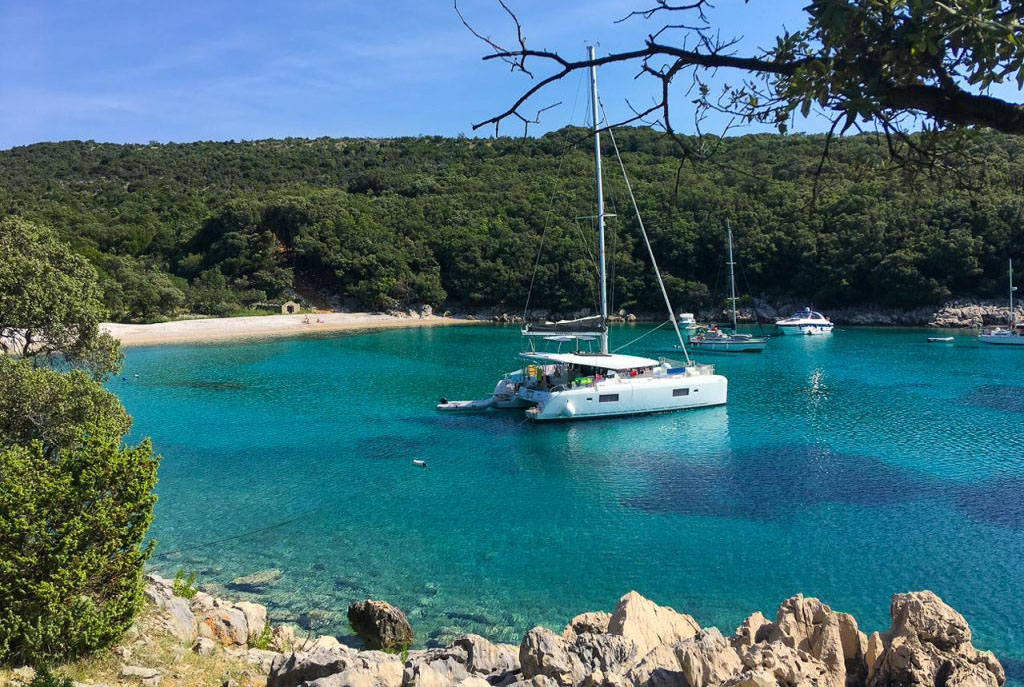
Day 6, Pag – Cres, 35 miles
Prepare to set sail as soon as possible in the morning, because your next destination is already waiting for you – the beautiful island of Cres, which is extremely rich in vegetation. Moor in ACI Marina Cres or smaller ports like Valun, Martinščica, Osor, and others. Cres has a long and varied coastline that includes many charming bays and coves on one side and attractive steep cliffs on the other. St. Ivan (Lubenice) is without a doubt the most beautiful beach on the island. The “Plava grota” cave, with its beautiful blue lagoon, and the beach Mali Bok, near Orlec, are also worth seeing. This pebbly beach is sheltered by high cliffs, which provide visitors with refreshing shade on hot summer days.
The picturesque Venetian tower with a circular floor plan from the 15th century, which is also the only tower that has survived of the original four towers and defensive walls that once surrounded and protected the city, is one of the main features of the island of Cres. Other cultural and historical attractions in the city include the northern city gate, the southern small city gate, the church of St. Mary of the Snow, the Franciscan monastery, the Benedictine monastery, the palace of the Petris family, the church of St. Mary Magdalene, and the city’s oldest mediaeval art monument, a column with capital from the 7th-8th centuries.
Day 7, Cres – Medulin (ACI marina Pomer), 25 miles
As the sailing adventure in western Kvarner comes to an end, we recommend a visit to the lovely Medulin and the islets of Ceja, Levan, and Bodulas. The windmills along the coast are also interesting, and history buffs should visit the archaeological site of Vižula, which contains the remains of Roman villas, while nature lovers will enjoy the duck ponds.
As you can see, there is a lot to see and do here, but we are out of time already. So, your vacation is over, but you can prepare for the next one by documenting everything you didn’t get to see this time. For the time being, take home a bag full of memories and, no doubt, some interesting anecdotes from this fantastic voyage.
You May Also Like
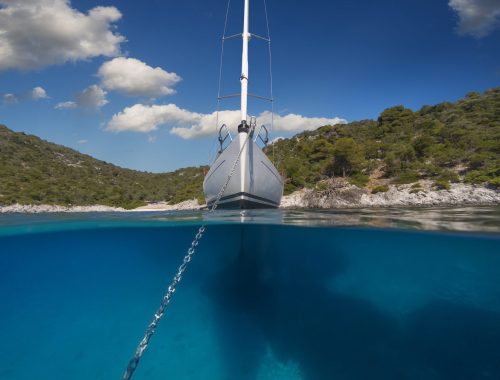
Anchoring: What to do if your boat drifts away in a bay
28/11/2025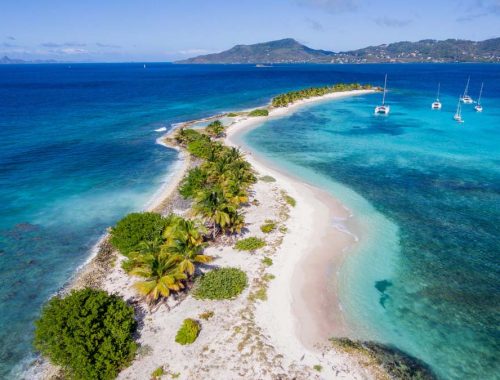
Caribbean: Grenada, the spice island that charms sailors
29/08/2025